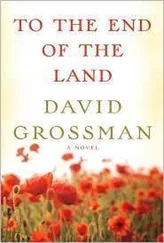For the cotton industry in Radcliffe’s time, unfortunately, there was no fiscal mechanism to force down rents to market levels. The increasing speculation in land forced up rents, squeezed interest and wages, and deterred manufacturers from investing money in power looms. By forcing rents beyond the point of merely appropriating the economic surplus, they were effectively demanding a slice of future output in the current period. This inherently unstable situation must, as it did, lead to a general recession.
The insights which we can extract from a review of William Radcliffe’s record of the cotton industry have not been exhausted. We will allude to one more, for it has significant general relevance. In 1815, with the end of the Napoleonic war, the landlords were anxious about the prospect of a decline in their revenue. Cheap imports would force down the price of food, and thereby compel a reduction in rents. Once again the landlords demanded a Corn Law which would protect their privileged status. So while industry was required to compete, the landlords in Parliament were able to make an exception of their ‘special’ case. Radcliffe intervened on their side. 34 He argued that farmers were entitled to a secure domestic market, free from the threat of foreign competition, so that they might expand output to meet demand and thereby reduce their prices. This, in fact, is not the economic effect of protection. In reality, the landlords benefit from an artificial price rise, by capitalising the inflated prices into higher rents and selling prices of land. So, unwittingly, Radcliffe supported Parliamentary action which was expressly designed to aggravate the problem which confronted his industry! He realised that the Corn Bill would increase the food prices paid by workers, and that he would have to pay more for the three sacks of flour which he used every week with which to make paste for his factory. Had he used this as a clue, he could have seen that reduced wheat prices meant higher living standards for the workers, higher profits for the industry and a greater ability to withstand any advantage which foreign competitors might enjoy.
Nevertheless, we have to be tolerant towards Radcliffe. He was an entrepreneur and innovator who wanted nothing more than the freedom to increase the material wealth and spiritual well-being of himself, his employees and his country. Adam Smith, on the other hand, had enjoyed far more leisure time in which to reflect on matters of economic theory, and yet he had failed to warn the public of the horrible results arising from his defence of the landlords’ right not to be taxed if they chose not to release their land for use by others. It was not until 1840 that P.J. Proudhon, the French anarchist philosopher, published a book that alerted the world (if it wished to listen) to the way in which land monopoly encouraged labour and the owners of capital to adopt restrictive practices as a defensive response to the original monopoly in land. 35
Contemporary historians, who as a group have concentrated on the affairs of the aristocracy and the issues of state, have compounded our problems by their neglecting to study the impact of land monopoly on the first infant industrial system. Prof. Hoskins declared of this period:
... the land inside the older towns was acquiring a scarcity value, above all in the towns that were surrounded by open fields, so that they could now grow outwards, and a steady rise in the price of land for building was added to the rise in the price of borrowed money. Possibly, too, the building trade was invaded by a new class of speculator who made conditions even worse than they need have been by extracting high profits out of the unprecedented demand for cheap houses. No one has studied this particular class of parasite, how he worked, in what opulence his descendents live today forgetful, or perhaps ignorant, of the origin of their wealth. Their forebears would make a fruitful study. 36
As the towns grew, noted the Hammonds, ‘the spaces of common within their borders became more valuable, and they were appropriated by the powerful classes’. 37 These two students of working class history were almost right to conclude that the advance in the value of ground rents during the Industrial Revolution was such that ‘any pupil of Adam Smith would have put a tax on the immense wealth created in the new industrial towns and taken off the heavy burdens on food, clothing and the materials of industry’. 38 This is exactly what ought to have happened, but was precisely what did not happen, thanks in no small part to the compromise in the teaching of Adam Smith. Had he indeed been an enlightened fiscal counsellor, the evolution of modern Western society would have been transformed for the good of all, beyond all recognition.
Notes
1J. R. Hicks, A Theory of Economic History, Oxford University Press, 1969, p. 148. See also E. J. Hobsbawm, ‘The British Standard of Living, 1790-1850’, Economic History Review , X (1957).
2Quoted in J. L. and B. Hammond, The Skilled Labourer 1760-1832, London: Longmans, Green & Co., 1933, p. 71. Credence to this view has been lent by a modern Marxist historian, E. P. Thompson, The Making of the English Working Class, Harmondsworth: Penguin, 1968, p.309.
3E. Halévy, England in 1815, London: Ernest Benn, 1960, p.290.
4Hammonds, op. cit ., p. 72.
5Although they were aware of this astonishingly slow rate of growth, the Hammonds subscribed to the thesis that wages were forced down by competition from the machines. Ibid., p. 71. In fact, the share of industry using power looms was too small before the 1820s to influence the level of wages.
6F. Collier, The Family Economy of the Working Class in the Cotton Industry 1784-1833, Manchester University Press, p.43.
7‘The evidence suggests, therefore, that as the English and Scots handloom weavers left the trade, or died, their places were taken by low-grade Irish labour at starvation rates of wages.’ A. Redford, Labour Migration in England, Manchester University Press, 1964, p.42.
8Halévy, op. cit., p. 292. For evidence of a drop in the price of cotton, see testimony of James Kay, a Bury cotton manufacturer, in a House of Commons committee report, cited in English Economic History, eds.: A. E. Bland, P. A. Brown and R.H. Tawney, London: G. Bell, 1933, p.501.
9Halévy, op. cit., p.289.
10 Ibid. , p. 290
11 Ibid., p.289, n.2.
12 Ibid., p.293
13W. Radcliffe, Letters on the Evils of the Exportation of Cotton Yarns, Stockport, 1811.
14W. Radcliffe, Origins of the New System of manufacture commonly called power- loom weaving, Stockport, 1828, p. 17.
15 Ibid., pp. 16, 106-7.
16Hammonds, The Skilled Labourer, op. cit., pp. 278-9.
17 Op. cit., pp.54, 62, 66.
18 Ibid., p. 49.
19The Speenhamland system of wage subsidies was introduced in 1795 to try and deal with this problem. ‘These allowances out of local rates were meant to keep labour above the starvation level at least. The system of outdoor relief, designed as a local expedient, spread rapidly throughout the country. Although they probably prevented much actual starvation, the wage subsidies did not keep real wages from falling.’ A. D. Gayer, W. W. Rostow, and A. J. Schwarts, The Growth and Fluctuation of the British Economy 1790-1850, Oxford: Clarendon Press, 1953, p. 56.
20 Op. cit., pp.48, 15-16.
21 Ibid., p.92.
22 Ibid., p.63.
23 Ibid., p. 92.
24F.M.L. Thompson, ‘The Land Market’, op. cit., and R.J. Thompson, ‘An Enquiry into the Rent of Agricultural Land in England and Wales during the Nineteenth Century’, in Essays in Agrarian History , op. cit.
Читать дальше












